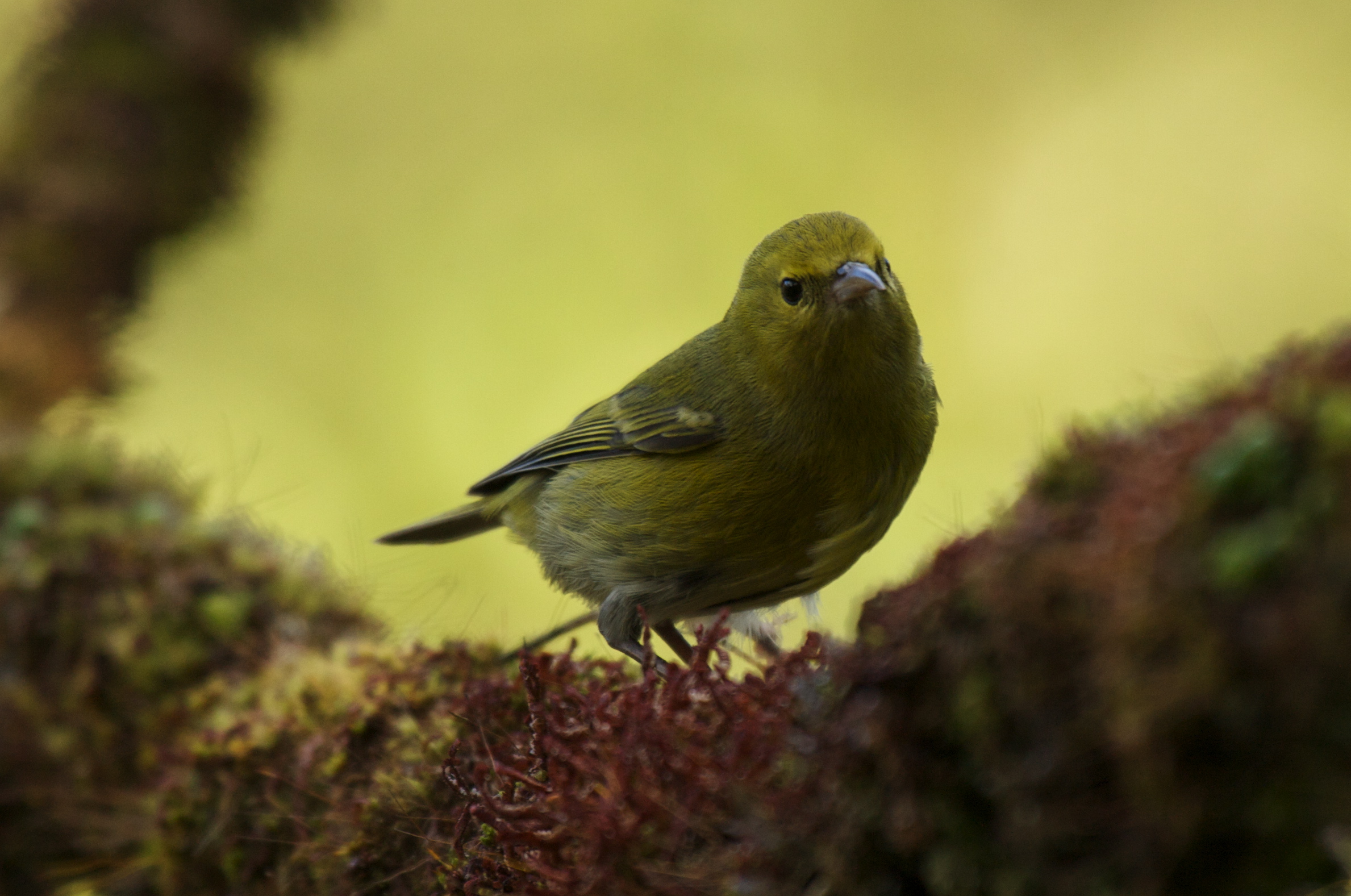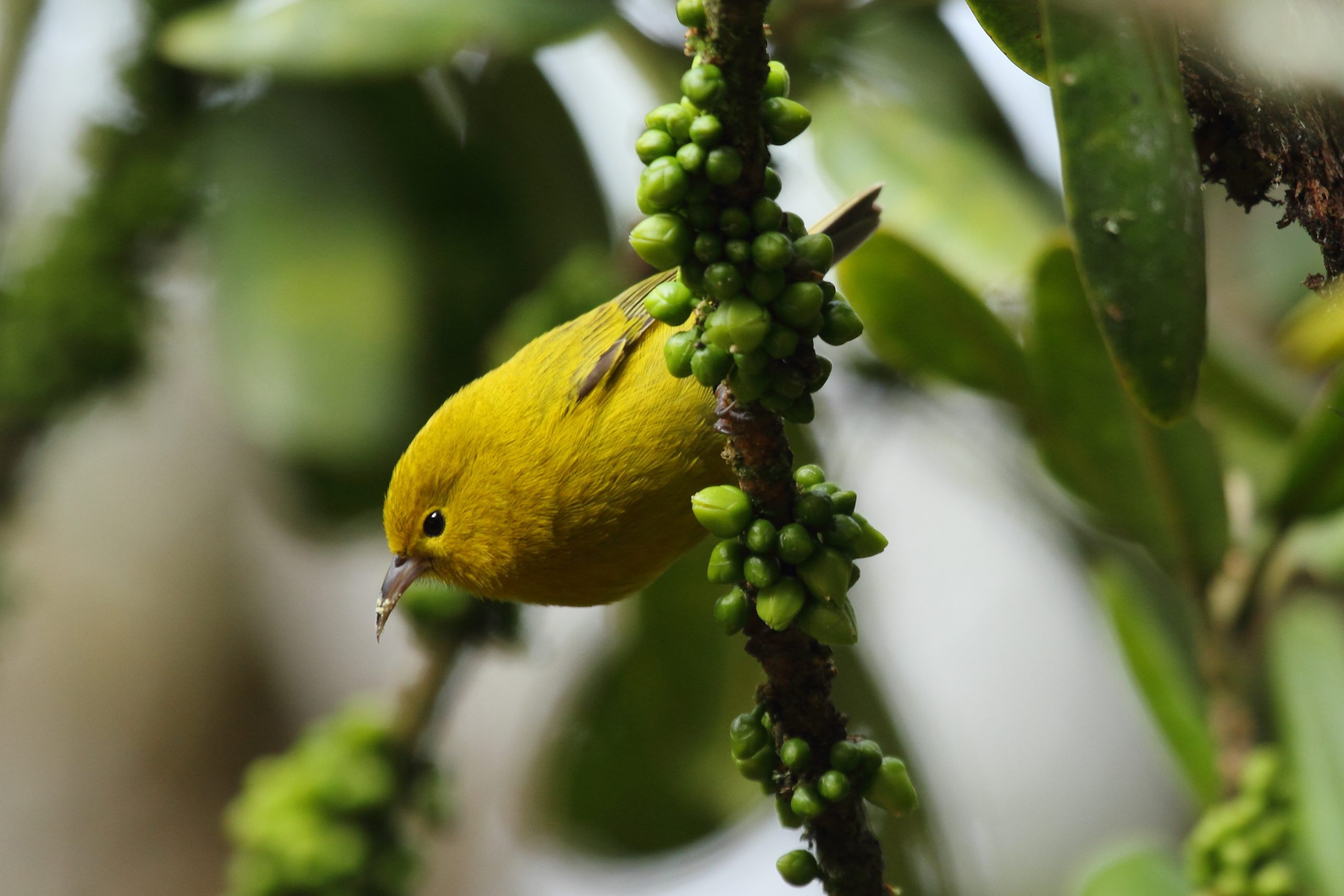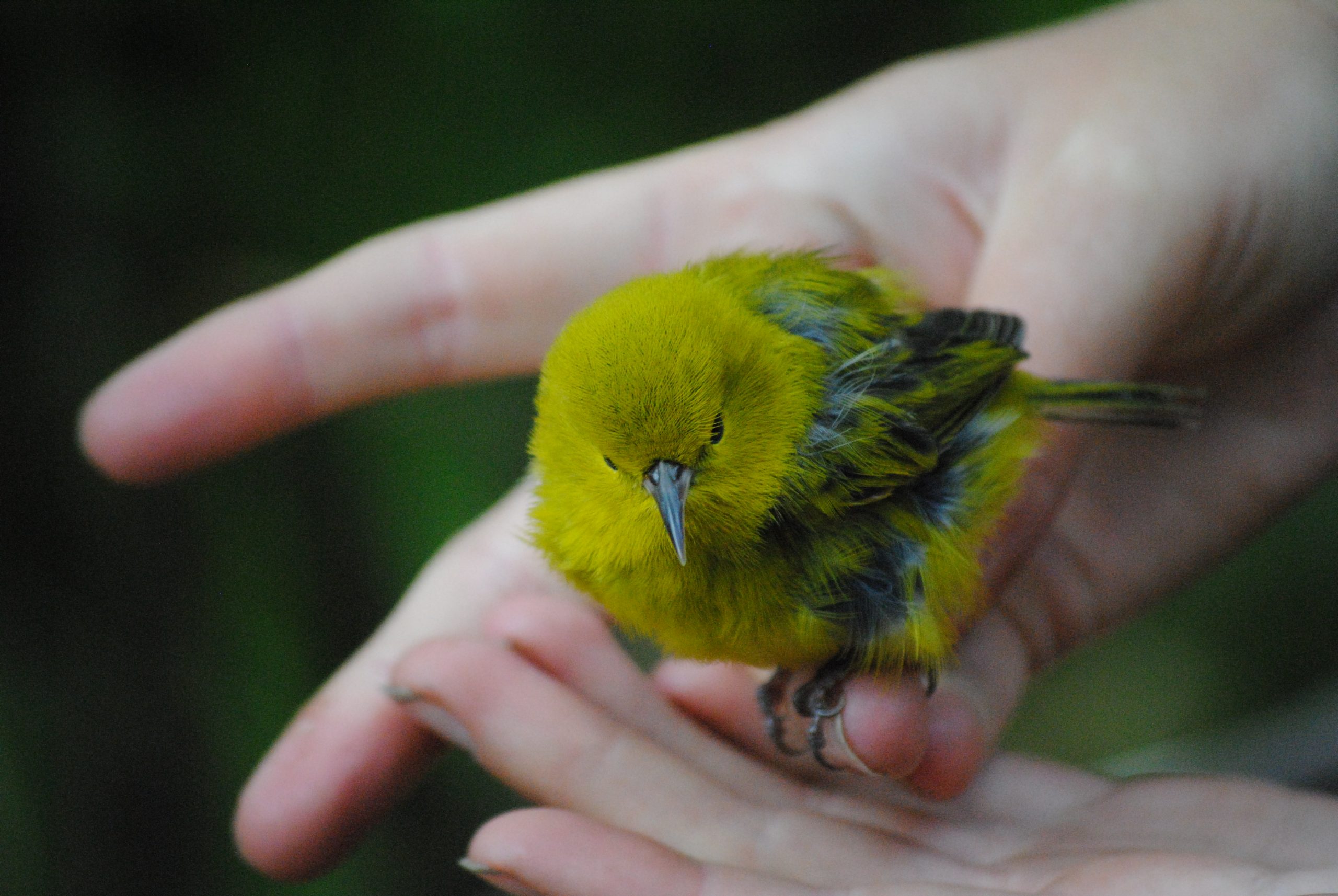ʻAnianiau
Names
- Ōlelo Hawaiʻi: ʻAnianiau
- Common: Lesser ʻAmakihi
- Scientific: Magumma parva, Hemignathus parvus
Song
Conservation Status
- State Recognized as Endemic
- NatureServe Heritage Rank G3—Vulnerable
- IUCN Red List Ranking—Vulnerable
Species Information
The ‘anianiau is the smallest Hawaiian honeycreeper (Family: Fringillidae). Endemic to Kaua‘i, the ‘anianiau also is one of the most common native birds of the island’s high-elevation forests. Adult males are brilliant yellow; females also are yellow, but duller. Constantly on the move, ‘anianiau feed on nectar from ‘ōhi‘a (Metrosideros polymorpha), ‘ōhelo (Vaccinium spp.), ‘alani (Melicope spp.), and other native and introduced plants. They also gather arthropods from the outer canopy and smaller twigs and branches of ‘ōhi‘a and koa (Acacia koa) trees as well as from the foliage of shrubs, vines, and the fronds of tree ferns (Cibotium spp.). Nectar, spiders, and Lepidoptera larvae compose the bulk of their diet. ‘Anianiau are occasionally seen in small flocks, especially at their favorite nectar sources. Males sing a sweet, high-pitched trill, and predominantly defend breeding territories that may be as small as 9 meters (29.3 feet) in diameter. Both sexes build the open-cup nest, females incubate eggs and brood young, and males provision females, generally away from the nest. No information on behavior or dependency of birds after learning how to fly.
Distribution
Occurs above 600 meters (2,000 feet) elevation in native forests of the Kōke‘e, Alaka‘i, and Waimea regions. They may occur as low as 100 meters (330 feet) elevation on the island’s northwestern coast. Original range likely included all forested regions of Kaua‘i. Currently, they occupy an estimated 15 percent of their former range.
Habitat
Mesic and wet forests above 600 meters (2,000 feet), with the highest densities above 1,100 meters (3,600 feet). These forests are dominated by ‘ōhi‘a, koa, ‘ōlapa (Cheirodendron trigynum), and lapalapa (C. platyphyllum). At lower elevations, where the species historically occurred, native habitats are severely degraded. Although public hunting reduces the number of feral ungulates in the most accessible parts of the species’ range, hunting is not an effective method to prevent habitat degradation across its entire range. Occupied habitats above Waimea Canyon, in and west of the Alaka‘i Swamp, are managed by the State of Hawai‘i
Threats
- Disease. Only one of 94 ‘anianiau tested positive for malarial parasites (Plasmodium relictum) in areas where parasites were common in other species. This either indicates low transmission rates, possible resistance, or very high mortality for this species.
- Habitat degradation. The species is tolerant to habitat alteration, but it is most common in undisturbed native forest. Introduction of non-native plants is the most important threat as ‘anianiau density is negatively related to the presence of non-native shrubs.
- Competition. Competition with introduced Japanese white-eyes (Zosterops japonicus) may negatively affect ‘anianiau. Non-native insects, especially yellow-jackets (Vespula pensylvanica) and ants (Linepithema humile), may compete with or prey on the native arthropods on which ‘anianiau feed. The role of non-native insects in native forest ecosystems is unclear.
- Mammalian predators. Although predation on adult ‘anianiau or their nests has not been documented, rats, and cats occur in the Alaka‘i Wilderness Preserve.
Plans & Projects
Additional Resources
For more information and references visit the State Wildlife Action Plan factsheets. DOFAWʻs species pages and State Wildlife Action Plan fact sheets are provided for general information and are not meant to be a citable, original source of data. If you are a student, researcher, or writer looking for a citable source, please explore the references below or find other original data sources, rather than citing these webpages. The references below were provided by the authors of the State Wildlife Action Plan fact sheets at the time of drafting:
- Camp, RJ and PM Gorresen. 2011. Design of forest bird monitoring for strategic habitat conservation on Kaua‘i Island, Hawai‘i. Hawai‘i Cooperative Studies Unit Technical Report HCSU-022. University of Hawai‘i at Hilo.
- Foster JT, Tweed EJ, Camp RJ, Woodworth BL, Adler CD, Telfer T. 2004. Long-term population changes of native and introduced birds in the Alaka‘i swamp, Kaua‘i. Conservation Biology 18:716-725.
- IUCN Red List of Threatened Species. 2015. Version 2014.3. Available at: www.iucnredlist.org. (Accessed May 2015).
- Lepson JK. 1997. ‘Anianiau (Hemignathus parvus). In The Birds of North America, No. 312 (Poole A, Gill F, editors.). Philadelphia, (PA): The Academy of Natural Sciences; and Washington DC: The American Ornithologists’ Union.
- Scott JM, Mountainspring S, Ramsey FL, Kepler CB. 1986. Forest bird communities of the Hawaiian islands: their dynamics, ecology and conservation. Lawrence, (KS): Cooper Ornithological Society.




